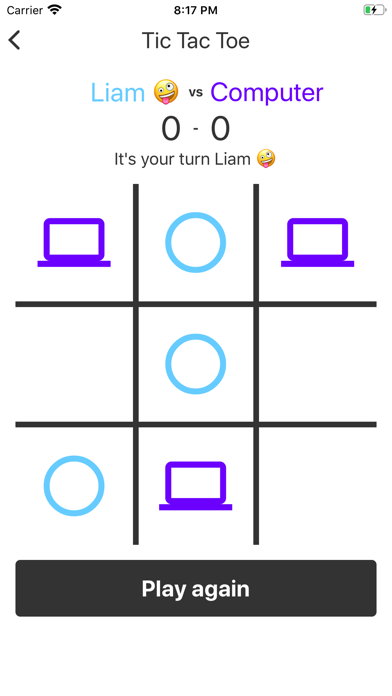
Tic Tac Toe: 3 In A Row app for iPhone and iPad
Developer: Blue Pixl Ltd
First release : 07 Nov 2018
App size: 28.61 Mb
- Challenge your friends or the computer
- Choose your theme, names, icons and colours
- Play offline in over 15 languages
Noughts and Crosses, also known as Tic-tac-toe, 3 in a row, or Xs and Os is the classic pen and paper game for two players. One player is usually X and the other O. The players take turns marking the spaces in a 3x3 grid, the player who succeeds in placing three of their marks in a horizontal, vertical, or diagonal row is the winner.
Now you can ditch the pen and paper and download the most customisable Noughts and Crosses game on the App Store! Choose your theme, names, icons, icon colours and language before challenging your friends or the super-slick computer to a game.
Think you’re good at Noughts and Crosses? Think again. With four computer difficulty levels, we dare you to take on the Insanity Challenge and beat the computer.
Whether you’re playing for fun or looking for a serious head-scratcher Noughts and Crosses is free and can be played offline-perfect for those boring plane journeys or train commutes!
Have fun!
A bit of history about the game:
Games played on three-in-a-row boards can be traced back to ancient Egypt, where such game boards have been found on roofing tiles dating from around 1300 BCE.
The first print reference to "noughts and crosses" (nought being an alternative word for zero), the British name, appeared in 1858, in an issue of Notes and Queries.
The first print reference to a game called "tick-tack-toe" occurred in 1884, but referred to "a childrens game played on a slate, consisting in trying with the eyes shut to bring the pencil down on one of the numbers of a set, the number hit being scored".
The US renaming of "noughts and crosses" as "tic-tac-toe" occurred in the 20th century.
In 1952, OXO (or Noughts and Crosses), developed by British computer scientist Sandy Douglas for the EDSAC computer at the University of Cambridge, became one of the first known video games. The computer player could play perfect games of noughts and crosses against a human opponent.



